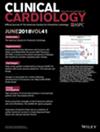Elucidating the Linkage Between Obesity-Related Body Fat Indicators and Atrial Fibrillation: Supported by Evidence From Mendelian Randomization and Mediation Analyses
Abstract
Objectives
To elucidating the linkage between obesity-associated body fat indicators and atrial fibrillation (AF) using Mendelian Randomization (MR) and mediation analysis.
Methods
The study utilized three independent genome-wide association study (GWAS) datasets, with containing over 450 000 individuals each, to represent body fat indicators as the exposure variable. Additionally, two summary genetic datasets of AF were utilized as the clinical outcome. Single nucleotide polymorphisms (SNPs) with p-values less than 5 × 10−10 were identified as instrumental variables (IVs) for MR analysis. The primary analysis method employed was the inverse-variance weighting (IVW) model, supplemented by three additional models: MR-Egger regression, weighted median, and maximum likelihood. Sensitivity analysis was conducted, encompassing tests for heterogeneity and horizontal pleiotropy, utilizing Cochran's Q, MR-Egger intercept, and MR-PRESSO tests to validate the reliability of the findings. Furthermore, a mediation analysis was conducted to explore potential mediators involved in the pathogenesis of AF.
Results
The IVW model demonstrated that per 1-SD increase in body fat indicators (body fat percentage, whole body fat mass, and trunk fat mass) is associated with an elevated risk of AF, with values of 63.1%, 55.0%, and 55.8% respectively. All three supplementary models arrived comparable conclusions with IVW model. The sensitivity analysis confirmed the absence of horizontal pleiotropy, thereby validating the reliability of the findings. Additionally, the mediation study indicates that hypertension and sleep apnea syndrome are identified as significant mediators during the pathogenesis of AF.
Conclusions
The study reveals that individuals with a higher body fat percentage tend to exhibit a heightened genetic predisposition for susceptibility to AF. Meanwhile, hypertension and sleep apnea syndrome have been identified as key mediators contributing to the pathogenesis of AF.


 求助内容:
求助内容: 应助结果提醒方式:
应助结果提醒方式:


